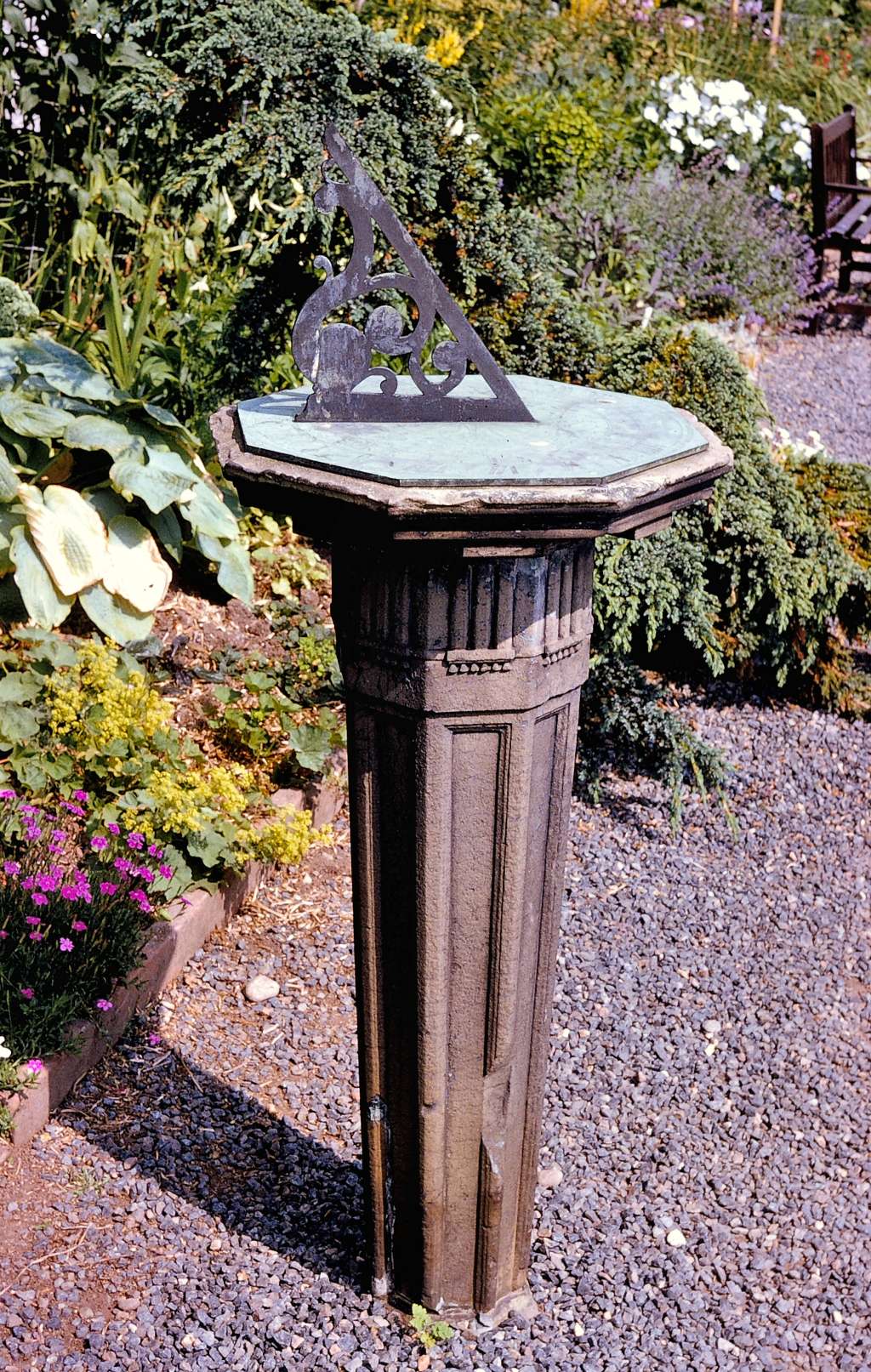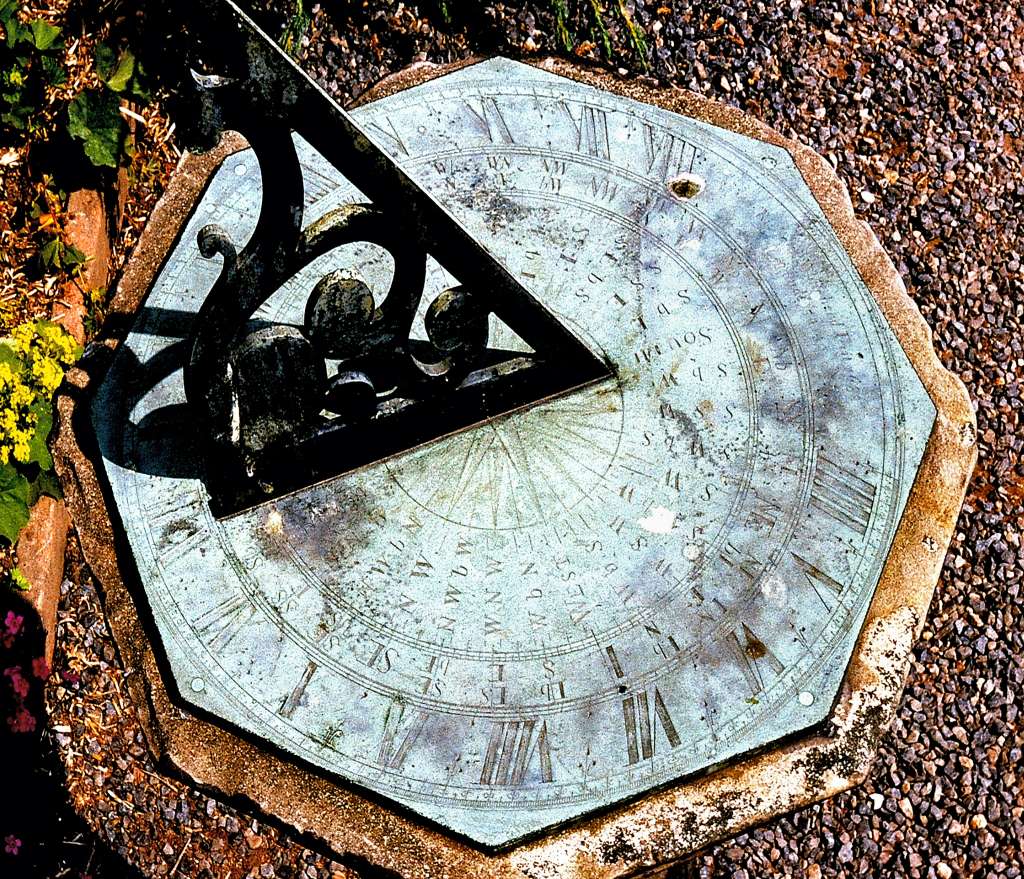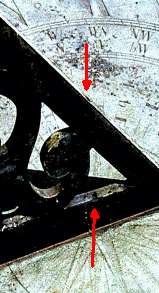

Penrith's unusual
sundial
Images courtesy of Robert Sylvester


 Robert
Sylvester, doyen of Cumbrian sundial photographers, was the first to record this
interesting sundial and we are grateful for permission to use his images. At first
glance the dial looks an ordinary, if quite large octagonal horizontal dial.
Delineated in 1688 by Richard Whitehead, an instrument maker who was apprenticed
to Henry Wynne and admitted to the Guild of clockmakers in 1671. He then
worked in his own business between 1683 and 1693. The Penrith dial shows time from 4am to 8pm in half,
quarter and eighth hours on scales inside the chapter ring and in minutes on the
outer edge. Strangely some of the actual hour lines on these inner scales seem
to be missing [eg 6 and 7pm]. There are inward and outward (line and dot form)
half hour markers. But the really unusual thing that strikes the observer is the
elaborate inner 32 point compass with all points of the compass named and, on an
adjacent (outer) scale, the reciprocal of the actual compass bearing.
Robert
Sylvester, doyen of Cumbrian sundial photographers, was the first to record this
interesting sundial and we are grateful for permission to use his images. At first
glance the dial looks an ordinary, if quite large octagonal horizontal dial.
Delineated in 1688 by Richard Whitehead, an instrument maker who was apprenticed
to Henry Wynne and admitted to the Guild of clockmakers in 1671. He then
worked in his own business between 1683 and 1693. The Penrith dial shows time from 4am to 8pm in half,
quarter and eighth hours on scales inside the chapter ring and in minutes on the
outer edge. Strangely some of the actual hour lines on these inner scales seem
to be missing [eg 6 and 7pm]. There are inward and outward (line and dot form)
half hour markers. But the really unusual thing that strikes the observer is the
elaborate inner 32 point compass with all points of the compass named and, on an
adjacent (outer) scale, the reciprocal of the actual compass bearing.
This scale is of course designed to be used with a vertical rod passed through holes in the gnomon - see the red arrows at the left - and thus centred on the compass. Markers on either side of the main 32 points indicate the width of this shadow for accurate centring. Two scales further divide each of the 32 points into 4 and 8 intervals. A half division is provided outside these scales (to the inside of the dial) and marked by an inward line with a three dot arrowhead.
A wonderful pierced gnomon with scroll pattern is present, the whole mounted on an excellent panelled octagonal stone pedestal which is slightly fluted and with no visible base.
Sadly Robert informs us that the actual dial shown here was later stolen and has never been recovered. A replica was made by John Davis which is still in place.
A most unusual and yet pleasing sundial design.
[Back]
19.08.17 Images © Robert
Sylvester